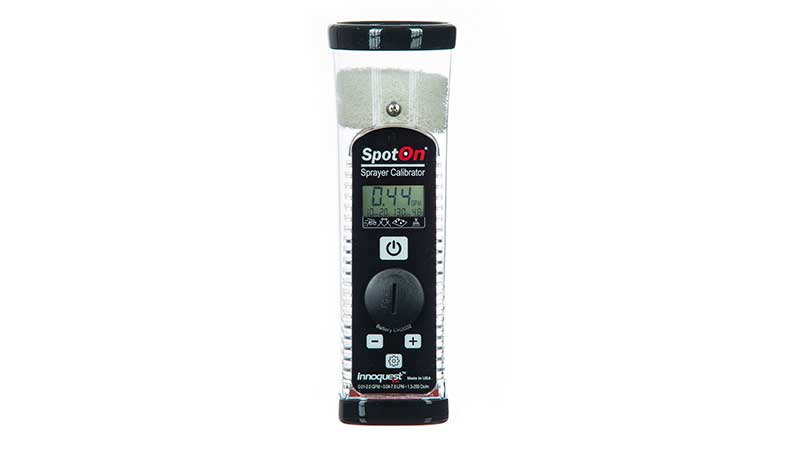MACA 2019: The News from Agriculture and Consumers
There was plenty to hear at the annual Mid America CropLife Association (MACA) meeting this September in Indianapolis, IN. The theme of the event was “Consumer Driven Agriculture,” and attendees were treated to speakers looking at a range of topics.
In terms of difficulty, 2019 for agriculture would rank near a 10. And unlike the case with gymnastics, that’s not necessarily a good thing! Although growers and ag retailers have gotten used to lower-than-expected commodity prices, this year piled on the negative news with uneven weather events around the globe and a protracted trade war between many of the world’s major agricultural export partners (including the U.S. and China).

Dr. William Tierney Jr.
Dr. William Tierney Jr., Chief Economist for AgResource Co., reviewed the myriad variables affecting agriculture in 2019. He also gave attendees a brief look ahead to 2020, offering a sobering outlook for the marketplace.
Tierney acknowledged just how difficult it was for many of the nation’s growers to simply get seed into the ground this spring. Record and consistent rainfall throughout much of the Midwest, Mid-South, and Eastern U.S., followed by unusually cool temperatures, kept many growers from getting into their fields well into June. Even worse, many acres never got planted at all.
“According to the Farm Bureau’s August 2019 estimates, there was a total of 19 million prevent plant acres across the country this year,” Tierney said. “Six states — Arkansas, Minnesota, Missouri, Ohio, Illinois, and South Dakota — accounted for almost 57% of this total. South Dakota had the nation’s highest number of prevent plant acres at 3.9 million acres.”
Given these non-existent or late planting dates, many analysts are forecasting that crop yields will be down significantly this year. For example, the U.S. corn yield estimate could be 165 bushels per acre, down 12 bushels per acre from the 40-year trend line.
As for soybeans, they might be in even worse shape based on all the market disruptions from the ongoing trade war between the U.S. and China. “Chinese imports of American soybeans have all but dried up over the past year,” Tierney said. Part of the reason for this, besides the ongoing trade dispute with the U.S., ties back to the steep decline in China’s hog herd, which typically consumes U.S. soybeans as feed. Because of an outbreak of African swine flu, Tierney estimated that the country has seen its hog production drop by 29% in 2019. And this number is expected to fall another 15% to 26% for 2020.
“Pork production in China may take more than five years to recover,” he said. “In fact, Reuters reported as many as half of China’s breeding pigs have either died or been slaughtered.”
Put these factors together, Tierney said, and the outlook for the next few years for the nation’s growers doesn’t appear very bright. “The prospects are that crop prices will continue to be low over the next several years, leading to a period of lower farm incomes,” he said. “Even given those prospects, prices could go even lower, causing more financial stress to develop. Right now, I wouldn’t be surprised to see corn prices below $3 per bushel in 2020 and soybeans as low as $7 per bushel.”
Consumer Trends
For most, agriculture is the starting point for the world’s food supply. Despite this fact, the average consumer might not completely understand (or appreciate) how his or her food comes to be in supermarkets for purchase. Even more importantly, consumer buying habits have changed significantly over the past decade or so, and agriculture, food producers, and food retailers are largely scrambling to catch up with many of these trends.
This was the message delivered to attendees by self-proclaimed supermarket guru Phil Lempert, Founder and Editor of The Lempert Report. “When we look at retail, it’s all about the relationship,” Lempert said. “And when it comes to this, we in agriculture really need to be ahead of the curve, not behind it.”
To understand exactly what the curve is these days, Lempert said, observers need to pay attention to the end-users of all things food — the consumers themselves. “Consumers have changed dramatically,” he said. “They actually understand what’s in their food, and many of them want a shorter list of ingredients in their food. And people want to engage with their food. That’s the magic button for them.”
In addition, Lempert added, today’s consumers are much more complex regarding their food-buying habits than any of the world’s previous generations tended to be. “In fact, studies have shown that 64% of the population will actually remove certain foods from their buying lists based upon their ingredients or their own dietary habits,” he said. “And half of consumers expect their food shopping experiences to be more personalized.”
Consumers are also getting more comfortable with using online sources for their food shopping needs, Lempert said. “By the end of 2019, it is estimated that 40% of customers will be buying at least some of their groceries online,” he said. “That’s up from around 17% in 2018.”
To adjust to this changing set of buying habits by consumers, food producers and retailers have largely altered how they bring products to the marketplace, Lempert said. “Many food companies are now hiring nutritional scientists to help them develop new, healthier food choices to appeal to today’s consumers,” he said. “For food retailers, they are going beyond just offering in-store samples to consumers and instead trying to position food choices that engage in all five of a consumers’ senses — sight, touch, hearing, and smell as well as taste.”
Eating in 3-D
An example of this in action, Lempert said, would be the food retail’s experimentation with 3D printers, which can allow consumers to “customize” their options. “Say you go into the bakery department at your local store,” he said. “Consumers can go to a kiosk and decide what ingredients they want in a cake. They would program this information into the computer, and this would then be sent to a 3D printer to manufacture. This would be a personal cake made just for the consumer, with no waste generated at the end of the day.”
To market these options, companies also have begun to alter how they tell consumers about new food choices, Lempert said. “Everyone is moving from a scare mentality, trying to convince people that other food choices are bad, to an inspirational one, where things like sustainability and reducing food waste are emphasized. And that’s exciting!”
Of course, many of these same companies have also struggled a bit while looking for the “next big” consumer trend. “For food producers and retailers, it’s important to know the difference between a trend and a fad,” Lempert said. “Fads only tend to last for a day in marketplace terms. Trends, however, have staying power, but only will keep this status if they are easily explainable to today’s consumers.”
When it comes to agriculture’s role in all these market changes, Lempert said that many of the world’s farmers are “the real celebrities” in this effort. “Many farmers are helping get the word out on modern agriculture through blogs, farm visits, and in-person speeches about the industry, which is so important,” he said. “They are really connecting with consumers, because consumers really want to know where their food comes from.”
To this end, Lempert sees farmers and agriculture investing more in emerging technologies such as vertical farming in urban areas to keep agriculture successful going forward. “Right now, the world’s population is supposed to hit nine billion by 2050, and 65% of this group will live in urban areas,” he said. “So vertical farming growing in cities like New York seems like a perfect way to go for agriculture in the future.”







